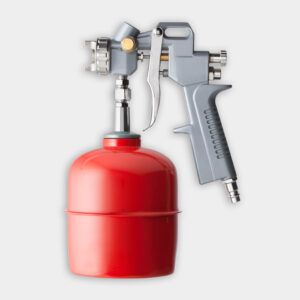Vinyl siding can fade over time, leaving your house looking dull and dated. Painting it is an affordable way to refresh your home’s exterior without paying for a full replacement, and it’s a relatively easy DIY project. In the video above, Ask This Old House paint expert Mauro Henrique offers valuable tips and techniques for achieving the best results.
Preparing Vinyl Siding for Painting
Before you begin painting, prepare the vinyl siding for the best possible results.
Cleaning the Siding
There are two effective methods for cleaning vinyl siding:
- Pressure washing: This method is quick and efficient for large areas, removing dirt and grime with ease. Use a light setting on your power washer.
- Scrubbing and rinsing: For smaller areas or if you don’t have access to a pressure washer, manually scrub the siding with a cleaning solution and rinse it off. Use a mild cleaning solution to avoid damaging the siding.
Allow at least two days after cleaning before you begin painting to make sure the siding is completely dry.
Timing Your Project
Choosing the right time to paint your vinyl siding is important for proper adhesion and longevity. Consider the following factors:
- Weather forecast: Look for a stretch of dry, mild weather.
- Temperature: Ideal painting conditions are between 60 and 85 degrees Fahrenheit.
- Humidity: Low humidity helps paint dry faster.
Selecting the Right Paint for Vinyl Siding
Not all paint types work for vinyl siding. Here’s what to look for.
Paint Type
When selecting paint for vinyl siding, look for a 100% acrylic base. This type of paint adheres well and is durable, making it ideal for vinyl. You can also look for specific “vinyl safe” paints specifically formulated for use on vinyl siding and designed to expand and contract with the material.
Color Considerations
You can choose to re-paint with your existing color or opt for something new. Think about the following factors when deciding:
- Lighter colors: These tend to last longer and are less prone to fading. They also reflect heat, reducing the chances of warping.
- Very dark colors: Dark colors can absorb more heat, potentially causing the vinyl to warp. If you prefer a darker shade, choose a paint specifically designed to resist heat absorption.
- Original color: For best results, choose a color that is similar to or lighter than the original siding color. This helps maintain the siding’s structural integrity.
Henrique used Regal Select Acrylic Exterior Paint in North Shore Green by Benjamin Moore.
Primer Use
In most cases, you won’t need to use a primer if the vinyl siding is in good condition. However, if the siding is significantly faded or damaged, a primer can help improve paint adhesion and coverage.
Painting Techniques for Vinyl Siding
Now that you’ve prepared the surface and chosen your paint, it’s time to apply it to the vinyl siding.
Tools for Application
Henrique recommends using a combination of tools for the best results. For this project, Henrique used a combination of a 3-inch flat paintbrush and a mini foam roller. You can find both at home centers.
- Paint sprayer: Ideal for covering large areas quickly and evenly.
- Mini foam roller: Perfect for smaller sections and touch-ups. It helps reach tight spots that larger tools might miss.
- Flat paintbrush: Essential for cutting in around edges and hard-to-reach areas. It allows for precision in painting corners and detailed sections.
Application Process
Follow these steps to paint your vinyl siding:
- Cutting in: Start by cutting in around edges, windows, and doors using a flat paintbrush. This step ensures clean lines and thorough coverage in detailed areas.
- Main surface coverage: Use a paint sprayer or mini foam roller to cover the main surface areas. Work in small sections to maintain control and avoid drips.
- Drying time: Allow the first coat to dry for about four hours before applying a second coat.
Multiple Coats
For the best coverage and longevity, apply at least two coats of paint to your vinyl siding. This helps with even color distribution and protection against the elements.
Vinyl Siding Maintenance and Longevity
Proper maintenance can help extend the life of your newly painted vinyl siding.
Expected Lifespan
Henrique estimates that a well-executed vinyl siding paint job can last between 10 and 12 years. However, this can vary depending on certain factors:
- Paint color: Darker colors tend to fade faster.
- Paint quality: High-quality paints tend to last longer and provide better protection.
- Exposure to sunlight and weather conditions: Siding exposed to harsh weather may need more frequent maintenance.
- Regular maintenance and cleaning: Keeping the siding clean can prevent damage and extend the paint’s lifespan.
Maintaining Painted Vinyl Siding
Follow our tips to keep your painted vinyl siding looking its best:
- Clean regularly: Clean the siding once or twice a year to remove dirt and prevent mildew. Use a mild detergent and a soft brush or cloth.
- Repaint as needed: Consider repainting when you notice significant fading or wear. This may be every 10–12 years, depending on the conditions.
- Touch-up damage: Touch up any chips or scratches promptly to prevent further damage.



